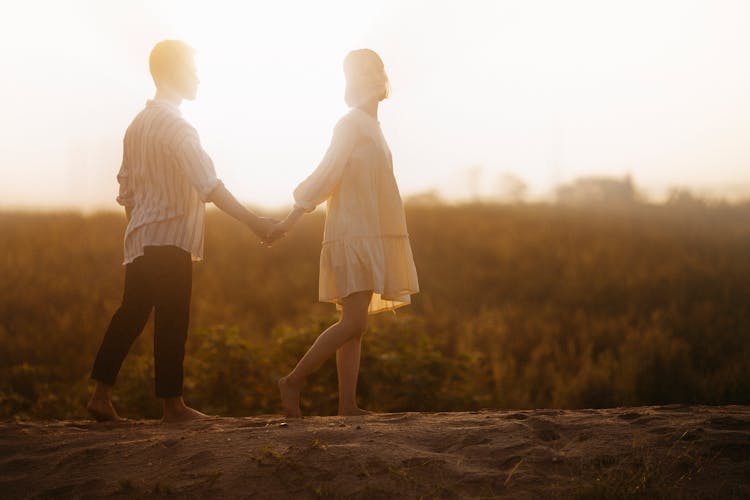All Categories
Featured
Table of Contents
TLDR Summary
- 👣 Embrace natural foot movements for better health
- 🌱 Discover enhanced proprioception and balance
- 👟 Strengthen foot muscles through barefoot practices
- 🌍 Connect with nature, reducing stress
Walking barefoot, often considered a mere trend, actually harbors a wealth of hidden benefits that can elevate not just physical health but mental well-being as well. The act of shedding footwear allows for natural foot mechanics, which is prime for proprioception, a crucial sensory feedback mechanism that promotes awareness of body position. With each step taken without shoes, individuals can experience improved balance and coordination, leading to better overall movement efficiency.
Among the notable advantages of going barefoot is enhanced proprioception, allowing one to feel the texture of the ground beneath their feet. This feedback is essential for reflexive actions and overall body awareness. When the feet interact directly with the ground, they stimulate numerous receptors that send information to the brain about body positioning. This interaction fosters increased stability, especially beneficial for athletes who need precise control over their movements. Engaging in activities such as yoga or tai chi barefoot further amplifies this feedback, enhancing one's ability to adapt to diverse surfaces.
Moreover, walking barefoot strengthens the intrinsic muscles of the feet. Many conventional shoes often inhibit the natural movement of the foot, leading to weakened foot muscles over time. Without shoes, the foot can flex, extend, and splay in a way that promotes muscle engagement. A great example of footwear that supports this trend includes the Joomra Women's Minimalist Trail Running Barefoot Shoes, designed with a wide toe box and zero drop for natural foot movement.
The psychological benefits of going shoeless are profound as well. Feeling the earth underfoot can evoke a strong connection with nature, a practice that many modern-day individuals have lost due to urban living and constant footwear. Studies have demonstrated that spending time in nature can significantly reduce stress and anxiety levels. The calming effect derived from this simple, yet often overlooked, practice highlights the emotional rejuvenation one can experience when walking barefoot. Additionally, as discussed on various wellness platforms, the practice of barefoot walking also correlates with improved mood and cognitive function.
Barefoot Basics: Your Guide to a Healthier, More Connected Life
As more people explore the practice of going barefoot, awareness around the types of surfaces and environments encountered while exploring this lifestyle becomes increasingly vital. Walking on varied terrains such as grass, sand, or dirt pathways stimulates the foot's sensory receptors to a greater extent than smooth concrete. This natural variation benefits proprioceptive feedback while promoting foot strength through diverse movement patterns. Allowing the feet to adapt to different surfaces can serve to build resilience as well, preparing the body to handle the rigors of daily activities.
Additionally, it’s fascinating to consider how the transition to barefoot living can aid in correcting biomechanical issues caused by poorly fitting shoes. Conditions such as plantar fasciitis or bunions may be alleviated through targeted exercises and exposure to footwear-free environments, all while preventing future injuries. For those hesitant to dive into this way of life, gradual exposure is recommended—starting indoors, then progressing to outdoor environments. Wearing minimalist shoes can also ease this transition, such as the Titype Hike Footwear Barefoot Shoes for Women Men.
Sole Searching: The Unexpected Rewards of Embracing Barefoot Lifestyles
This newfound emphasis on natural foot health contributes to a greater understanding of personal wellness and community engagement. By being visible within community spaces—barefoot in the park, at yoga studios, or gym sessions—individuals foster conversations around health and wellness while encouraging others to explore similar paths. This communal attitude reinforces a sense of belonging and collective healing in many urban settings.
Furthermore, embracing a barefoot lifestyle can have surprising effects on athletic performance. Many athletes are now eschewing traditional running shoes in favor of barefoot or minimalist options to improve their technique and reduce the risk of injury. Many of these options, such as the JIASUQI Men's Walking Shoes, are adapted to provide a minimalist experience while still offering protection. The focus on barefoot training allows athletes to develop a more natural running gait, reducing overexertion and injury risk while enhancing agility and speed.
The Sole Connection: How Barefoot Living Links You to Better Health
Understanding proprioception in a barefoot context is critical. Proprioceptive input helps coordinate bodily movements and adjust to the surrounding space effectively. Enhanced proprioception fosters a deeper awareness of where one's body is positioned in space—an aspect essential to everyday tasks, from walking to intricate forms of dance. Just as shoes can dull this sense, the lack of footwear sharpens these reflexes, allowing individuals to navigate their environments seamlessly.
Walking barefoot may be a small act, but it holds the potential for outstanding benefits—both physically and mentally. By gaining a deeper appreciation for our natural form and the relationship between our body and the ground below us, people can enhance their well-being in numerous, rewarding ways. The choice to walk barefoot, counter to the ample conventional wisdom, leads to fostering a deeper connection with oneself, the environment, and the joys of movement.
What are the health benefits of walking barefoot?
How can I safely transition to barefoot walking?
In the grand tapestry of health and wellness, going barefoot may very well be one of the simplest threads that weave together a stronger, healthier, and more connected way of living. It encourages an authentic return to our roots—promoting personal, emotional, and physical well-being by embracing the world with our own two feet.

Barefoot Bonanza: 8 Reasons to Kick Off Your Shoes for Good
Latest Posts
Investing 101: From Novice to Expert
Effortless Tile Shower Cleaning Tips
Maximizing ROI with Fractional Executives: A Smart Choice